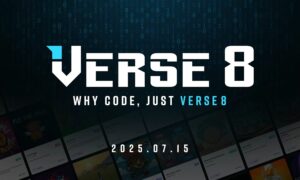Synthesia, a British artificial intelligence startup, unveiled a series of new product updates on Monday aimed at enhancing its video production capabilities for large companies.
TakeAway Points:
- Synthesia, supported by Nvidia, unveiled new features that improve accessibility and ease by enabling AI avatar creation via a phone or webcam.
- Multilingual video capabilities in English, French, German, and Chinese, as well as full-body avatars with hand movements, are among the latest improvements.
- Reduced customer support tickets and increased revenue are the goals of Synthesia’s enterprise focus. The business received $90 million at a $1 billion value last year.
Synthesia’s New Product Updates
The seven-year-old firm, backed by Nvidia, introduced features that allow users to create AI avatars using just a laptop webcam or phone. This marks a significant shift from its earlier offerings, which required users to visit a studio for avatar creation. Among the new updates are the ability to produce AI avatars with webcams or phones, “full body” avatars with hands and arms, and a screen recording tool that features an AI avatar guiding users through content.
Synthesia’s CEO, Victor Riparbelli, highlighted the company’s evolution from initially targeting Hollywood agencies and big-budget video production companies to focusing on democratizing video creation for a broader audience.
“What we figured out was that the quality threshold to do anything with these guys was so big, no matter what we do, we’ll be a very small part of a much bigger process,” Riparbelli said.
He emphasized the importance of making video creation accessible to millions of people who lack the budget for traditional video production.
New Features: AI Avatars
One of the standout features introduced by Synthesia is the ability to create AI-generated avatars by recording less than five minutes of footage using a webcam or phone. This new capability eliminates the need for users to visit a studio, making the process more convenient and accessible.
Additionally, Synthesia launched full-body avatars, which can move their hands and arms, a significant advancement from the current portrait-view avatars. This development addresses the challenge of generating realistic hand movements, which has traditionally been difficult for AI.
Synthesia also introduced the option to play videos of AI avatars speaking in multiple languages, including English, French, German, and Chinese. The company plans to tailor AI avatars for different countries in the future, such as a Nigerian avatar for local tutorials.
Another notable feature is the AI video assistant, which can produce summaries of entire articles and documents, making it useful for tasks like explaining company benefits packages. The new screen recording tool, which shows an AI avatar guiding users through content, further enhances the platform’s utility.
Focus on the Enterprise and Market Position
In an interview with CNBC, Riparbelli described Synthesia’s shift towards an enterprise-focused product overhaul, likening it to giants like Microsoft, Salesforce, and Zoom.
“The world has been blown away by this stuff for the last 12 to 18 to 24 months, which is awesome. But now we have experimented a lot, and we have found out the right use cases for these technologies that have lasting business value. They’re not like just a short-term PR moment.” Riparbelli said.
Riparbelli emphasized the importance of creating workflows that help businesses achieve their goals, such as reducing customer support tickets through video content or enhancing sales efforts with video communications. Last year, Synthesia raised $90 million from investors, including Nvidia and venture capital firm Accel, in a funding round that valued the company at $1 billion, giving it “unicorn” status. Synthesia’s competitors include AI video tools like Veed, Colossyan, Elai, and HeyGen, as well as TikTok’s Symphony Assistant, which allows creators to make their own AI avatars.
































